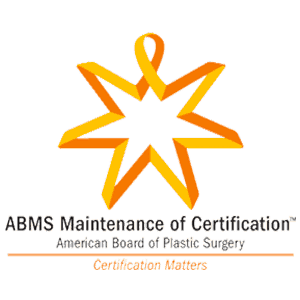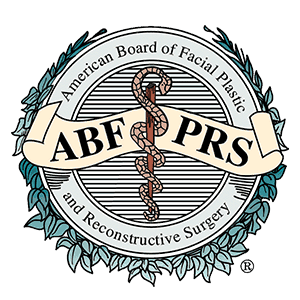NeoGraft Hair Restoration in Denver
YOUR HAIR RESTORATION SOLUTION
WATCH THIS SHORT PRESENTATION ON HAIR LOSS SOLUTIONS
- What Causes Baldness? Types of Baldness. Best Indicators.
- Solutions (External Options, Injections Options, Surgical Options)
- Recovery Time. Before & After Case Studies
- Financing to achieve low monthly payment options
OUR PROCESS
- Free Quote (15 min)
- Preparation Consultation and Scheduling (30 min)
- Stem Cell / PRP Pre-Op Therapy Boost (Optional 2-3 Sessions)
- Pre -Op + Surgery ( 1-3 hours)
- Post-Op results review ( 3 days after surgery)
Recovery
Following the procedure, we will provide post-operative medicine and instructions. After that, you are on your way home! Most patients are able to resume normal activity by the following day, including showering.
Results In 3 Months
After a few weeks have passed, the transplanted hair may fall out, leaving behind the bulbs of the follicles. From these bulbs new hair will begin to grow almost immediately, showing significant growth within the first 3 months.
By month 9, the transplants should result in the full, lush new hair.
Who is a good candidate for NeoGraft?
Anyone that is looking for a natural looking result that gives them more hair coverage. Men who prefer to wear short haircuts, or those looking to cover up scars left from a “strip” linear harvest procedure are great candidates. Women who wish to obtain a fuller head of hair, or lower their hairline are also great candidates.
Video Transcript
1st Slide
Hello! Welcome to Broadway Plastic Surgery and Med Spa.
This short presentation will prepare you for your consultation and will provide brief education on proven hair restoration techniques used here at Broadway.
Let’s dive in.
2nd Slide – What Cases Baldness?
Did you know, we used to think that male pattern baldness or hair loss was solely genetic? Let’s take a look at this slide at the royal family as our first example.
In the royal family tree, Williams’s hair loss was thought to come from his mother’s father. What we’re seeing here is that it’s coming from multiple sides of the family.
So if your family is riddled with male pattern hair loss, you’re going to be more susceptible to it.
On the other hand, we’ve also seen people who suffer from male pattern hair loss don’t have a family history and they’re the first in the family to have it show up.
Hair loss is primarily related to genetics and your family history will give us clues as to how progressive your hair loss might be, when it might start, how aggressive it’s going to be, and what the final result would be unless we intervene.
3rd Slide – Types of Baldness
There are several different areas where baldness occurs. For most people, it starts from the front and works its way backward.
Most early patients have a temporal recession, hairline receding, and then it progressively gets worse. If left untreated, In many cases, the patient will become completely bald.
4th Slide – Best Indicators
The best indicator for what might happen is the individual age where it becomes noticeable. Some people may lose about 50% of their individual hairs before they notice that it’s getting thinner.
If this occurs at an early age, the predicted hair loss will become more severe. For other people, it may take a longer period of time before they start noticing it, a sign it’s progressing more slowly.
Whether slow or fast, what causes hair loss? The stimulus for your hair follicles to go into retirement is DHT. DHT is a by-product or breakdown product of testosterone.
This is the signal that tells our hair follicles to go into retirement. DHT shortens the growth phase, which we also call the antigen phase.
It miniaturizes the hair follicles and it thereby decreases the number of hair follicles. On this slide, you can see that the antigen phase can last for a period of years.
As an example, you might have seen a person with hair down to their waist, but you will almost never see anyone with hair all the way down to her ankles. That’s because the hair follicles go into a resting phase, fall out, and then the cycle starts over again.
5th Slide – External Options
So what are our options for hair loss?
1) We could accept it. That might not be the best option, but certainly, an option that you need to decide if it’s an issue, if it’s a big enough issue for you to pursue.
There are several other non-surgical options you might consider.
- The first is infrared light. And this is just one example. Kapilis is a baseball cap, and I think it’d be easy to wear that around the house for a few minutes every other day or so. The way that works is it heats the scalp and that helps to bring in better blood supply. It’s a vaso-dilator opening up the blood supply, bringing in more nutrition and support for the hair follicle itself. The downside of this treatment option is that it can take a long period of time, and you still may not see any significant improvement.
- Rogaine and other topicals are vasodilators as well.
Originally it was used for high blood pressure and occasionally you’ll see a patient on Minoxidil for their blood pressure issue.
As a vasodilator, it opens up the blood supply again, giving better nutrition and support to your hair follicles.
In one study, 60% showed some increase in density, but most people who have tried this or currently use it only report a 10 to 12% increase in density, which is hardly noticeable.
Many patients may or may not see a significant change in Rogaine by itself, but the thought process is to continue to support the hair follicles and delay the onset of male pattern hair loss as long as possible and help you hang on to the hair that you do have. - Propecia works a little bit differently in that it inhibits the conversion of testosterone to DHT and again, DHT is the bad actor. So in one study, 66% of patients showed some regrowth, but 99% showed no additional loss at two years. This option is helpful for people to hold on to the hair they currently have and support the hair follicles still have available.
6th Slide – Injection Options
- Another option is PRP, which stands for platelet-rich plasma. The way that we obtain PRP is to take a blood sample from you, the patient. We spin that blood down and the platelets will separate out in different layers. We obtain those PRP and inject them. As you may know, PRP is also used to help rehabilitate athletic injuries. It’s used in a number of different ways for cosmetic surgery. It also can, in some cases, make a significant difference in your hair loss. Primarily, we’ve seen the results in women and also in younger men. While some don’t notice the results of PRP alone, we’ve found that when used to support follicles after transplantation, a surgery procedure for those who choose transplants. It works by prepping the scalp for the procedure; we see better results when pairing the two procedures together. PRP increases the vascular supply, reduces inflammation, and can increase the density of the non-transplanted hair.
- Like PRP, Stem cell therapy is a newer more potent option that’s available. Stem cells can bring in blood supply, create new blood vessels, and enlarge the vessels. Once again, this treatment is best when paired with surgery options as it supports the transplanted hair follicles.
7th Slide – Surgical Options
- Finally, the most effective solution for hair loss is surgical options. These primarily fall into several categories.
One is the strip procedure. This used to be the most common way to obtain hair follicles. The surgeon excises a swath of scalp and that piece of scalp is then cut into progressively smaller pieces, finally getting down to the follicle itself. This results in quickly obtaining a larger number of grafts that can be obtained and transplanted in a single procedure.
The downside is more postoperative discomfort, a visible long linear scar, and oftentimes the recovery times are extended. - Another surgical option, primarily used in the past is called “punch graphs. The advantage of this process at the time was that it showed the scientific community that the grafts obtained from the back of the head or along the side of the head were not as susceptible to the DHT. The great thing about these grafts was they showed us that hair transplantation was possible.
The clear downside was that it left the patient with a doll-like appearance. There were also reported issues with post-operative discomfort.
8th Slide – Your Solution
- So where have we landed with current technology?
We now have what is called FUE (follicular unit extraction.)
With this procedure, we use a machine called NeoGraft, which can be seen on the slide in the top left.
The machine has a handpiece containing a small pen-tip-sized “small punch”
The punch is spun very rapidly, and suction is applied at the same time.
This removes a graph, which is shown in the center of the top of the slide.
These graphs are captured in the filter and separated for implantation where needed.
Unlike other procedures, this results in tiny holes where the graph was removed.
These tiny holes close up very quickly and hair will grow back in those areas.
In many cases, we will cut the hair short the back of the head, and within two weeks or less, the patient can get another haircut and no holes are visible; It’s a quicker recovery.
Another benefit is the patient does not have a long linear scar.
Is this right for you? The best candidates for FUE or neograft are patients who want a quicker and less invasive procedure, less discomfort, and quicker healing.
It also allows patients to wear their hair short as well, unlike other procedures.
9th Slide – Recovery Time
Let’s look at a real case.
As you will see, with FUE, recovery is typically very simple. Most patients will use maybe one, or two pain pills postoperatively. Usually, they are off their pain medicine by the next day.
You can see the pre-op photo here on the slide where this patient has a receding hairline and a temporal hairline that’s not as dense. You can see the hair design as to where the grafts are going to be placed.
The next image is for the little slits that are being placed for the grafts to be placed into.
These little slits are made with either a needle or a little tiny pin-point knife blade.
Then the grafts will be placed. Following the implantation, small crusts will occur immediately after surgery and will take about five to 10 days to sort of fall off.
Once healed, it’s a rewarding waiting game. We learned about hair cycles earlier in this presentation; for the next 9 to 10 months your body will continue feeding the new follicles which will continue to grow a more full appearance. At 10 months you will see the full and final results, a significant difference in appearance.
10th Slide – Before and Afters
Here are a few other common results that can be seen in men and in women with the Neograft procedure.
This is an option that you could consider. (hold here for 5 more seconds so viewers can see the slides)
11th Slide – Boost your confidence
Thank you for watching this slide presentation!
We look forward to your discovery call where we will provide a custom quote range, and talk about financing options if lower monthly payments are a better option.
Most importantly, we look forward to helping you achieve your goals, you are now one step closer to a new look you love!





What Is NeoGraft?
Local anesthesia is provided before and during your procedure. Oral sedatives can also be used to help you relax, stay comfortable and allow for time to pass more quickly. You may also remain fully awake and many of our patients listen to music during the procedure. Should you feel you need to take a break, simply let us know and we will be happy to give you the time that you need.
NeoGraft Benefits
- Less invasive procedure
- Less post-procedure discomfort
- No linear donor scar
- No suture or surgical staples
NeoGraft Procedure
What To Expect During The Procedure
Local anesthesia is provided before and during your procedure. You will remain fully awake, many of our patients listen to music during the procedure to help keep their mind at ease. Should you feel you need to take a break, simply let us know and we will be happy to give you the time that you need.
Rediscover Your Confidence with Hair Transplant – NeoGraft at Broadway Plastic Surgery and Med Spa in Denver
Hair loss is a common concern that affects millions of people worldwide, impacting their confidence and self-esteem. If you’re looking for a solution that offers natural-looking, permanent results, the NeoGraft hair transplant procedure at Broadway Plastic Surgery and Med Spa in Denver might be the answer. This innovative technique is transforming the field of hair restoration, providing patients with a minimally invasive, effective option. Let’s explore the numerous benefits of the NeoGraft hair transplant and why you should choose Broadway Plastic Surgery and Med Spa for this life-changing procedure.
What is NeoGraft Hair Transplant?
NeoGraft is a state-of-the-art hair restoration technique that uses automated Follicular Unit Extraction (FUE) to harvest individual hair follicles from a donor area, typically the back of the scalp, and transplant them to thinning or balding areas. Unlike traditional hair transplant methods, NeoGraft is minimally invasive, leaving no linear scars and requiring less recovery time. This advanced technology ensures a more precise and efficient process, resulting in natural-looking, long-lasting hair growth.
Natural-Looking Results
One of the most significant benefits of the NeoGraft hair transplant is the natural-looking results it delivers. The FUE technique allows for the careful extraction and placement of individual hair follicles, mimicking the natural growth pattern of your hair. This meticulous process ensures that the transplanted hair blends seamlessly with your existing hair, providing a natural and undetectable appearance. Patients can enjoy thicker, fuller hair without the telltale signs of a hair transplant.
Minimally Invasive Procedure
NeoGraft is a minimally invasive procedure that offers numerous advantages over traditional hair transplant methods. The automated FUE technique does not require the removal of a large strip of scalp, which means no linear scars and less trauma to the donor area. This results in a more comfortable experience with reduced pain and faster healing. Most patients can return to their normal activities within a few days, making NeoGraft a convenient option for those with busy lifestyles.
Faster Recovery Time
Thanks to its minimally invasive nature, the NeoGraft procedure boasts a faster recovery time compared to traditional hair transplant methods. The absence of a large incision means less discomfort and quicker healing. Most patients experience minimal downtime and can resume their daily activities shortly after the procedure. This speedy recovery allows you to get back to your routine with minimal disruption while enjoying the benefits of your new hair growth.
No Linear Scarring
Traditional hair transplant methods often leave a visible linear scar at the donor site, which can be a concern for many patients. NeoGraft eliminates this issue by using the FUE technique, which involves extracting individual hair follicles without the need for a large incision. This means no linear scarring, allowing you to wear your hair short or style it as you wish without worrying about visible scars.
High Success Rate and Permanent Results
NeoGraft hair transplant offers a high success rate and permanent results. The transplanted hair follicles are resistant to the hormone that causes hair loss, ensuring that the new hair growth is long-lasting. With proper care and maintenance, the results of your NeoGraft procedure can last a lifetime, providing you with a permanent solution to hair loss and a boost in confidence.
Customized Treatment Plans
At Broadway Plastic Surgery and Med Spa, we understand that each patient’s hair loss pattern and goals are unique. Our experienced team of board-certified professionals will work with you to develop a customized treatment plan tailored to your specific needs. During your consultation, we will assess your hair loss, discuss your desired outcome, and create a personalized plan to ensure the best possible results. This individualized approach ensures that you achieve a natural and aesthetically pleasing outcome.
Expertise and Advanced Techniques
Choosing the right plastic surgery center for your hair transplant is crucial for achieving optimal results. At Broadway Plastic Surgery and Med Spa, we utilize the latest techniques and technologies to ensure precision and effectiveness. Our commitment to excellence and patient satisfaction means that you will receive the highest quality care throughout your entire experience. Our skilled surgeons have extensive experience in performing NeoGraft procedures, ensuring that you achieve the best possible results.
Book Your Appointment and Start Your Transformation Today!
Are you ready to rediscover your confidence with a NeoGraft hair transplant? There’s no better time to take the first step towards a fuller, healthier head of hair. Book your appointment with Broadway Plastic Surgery and Med Spa today and start your transformation journey. Our team of experts is here to guide you every step of the way, ensuring that you achieve the beautiful, natural-looking results you’ve always dreamed of.
Don’t wait any longer to enhance your appearance and improve your confidence. Book your appointment now and discover the life-changing benefits of NeoGraft hair transplant at Broadway Plastic Surgery and Med Spa in Denver. Your journey to a more beautiful and confident you begins here!

